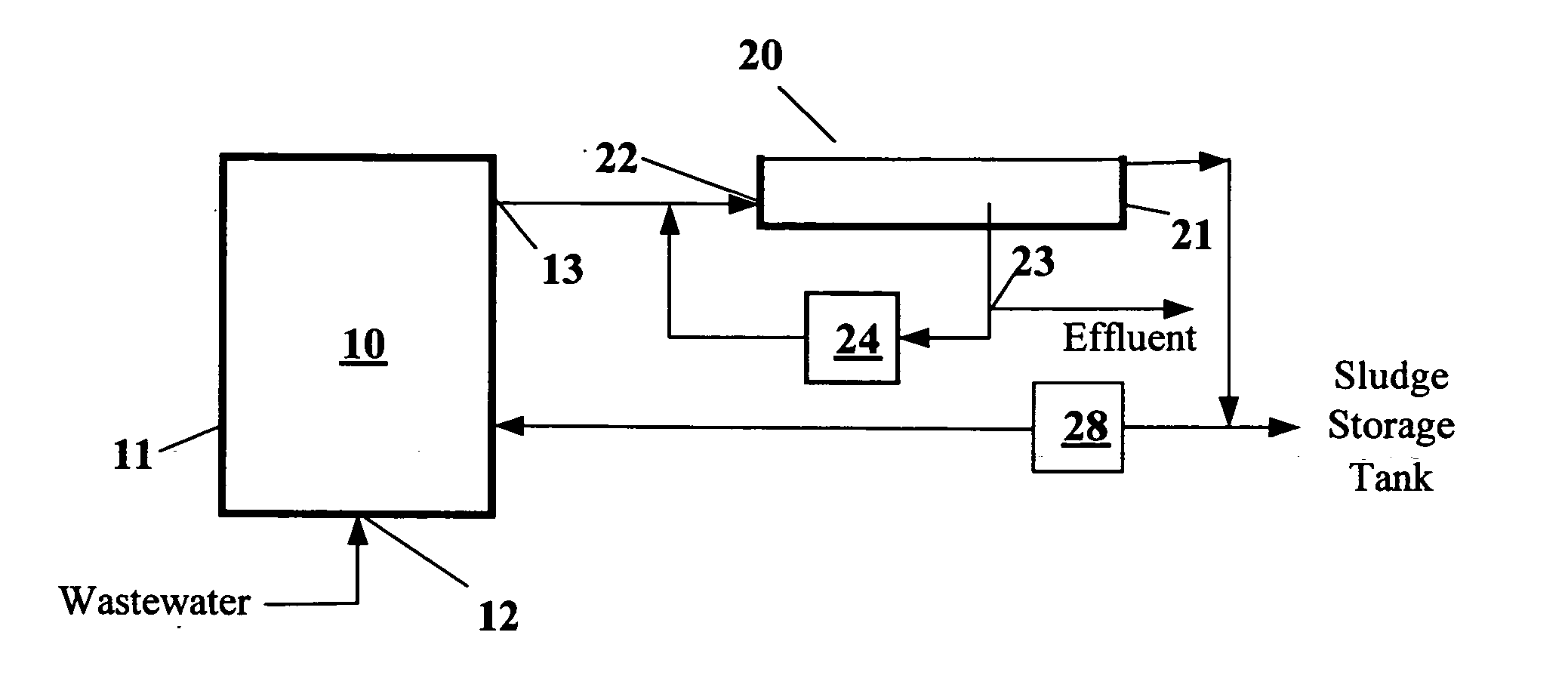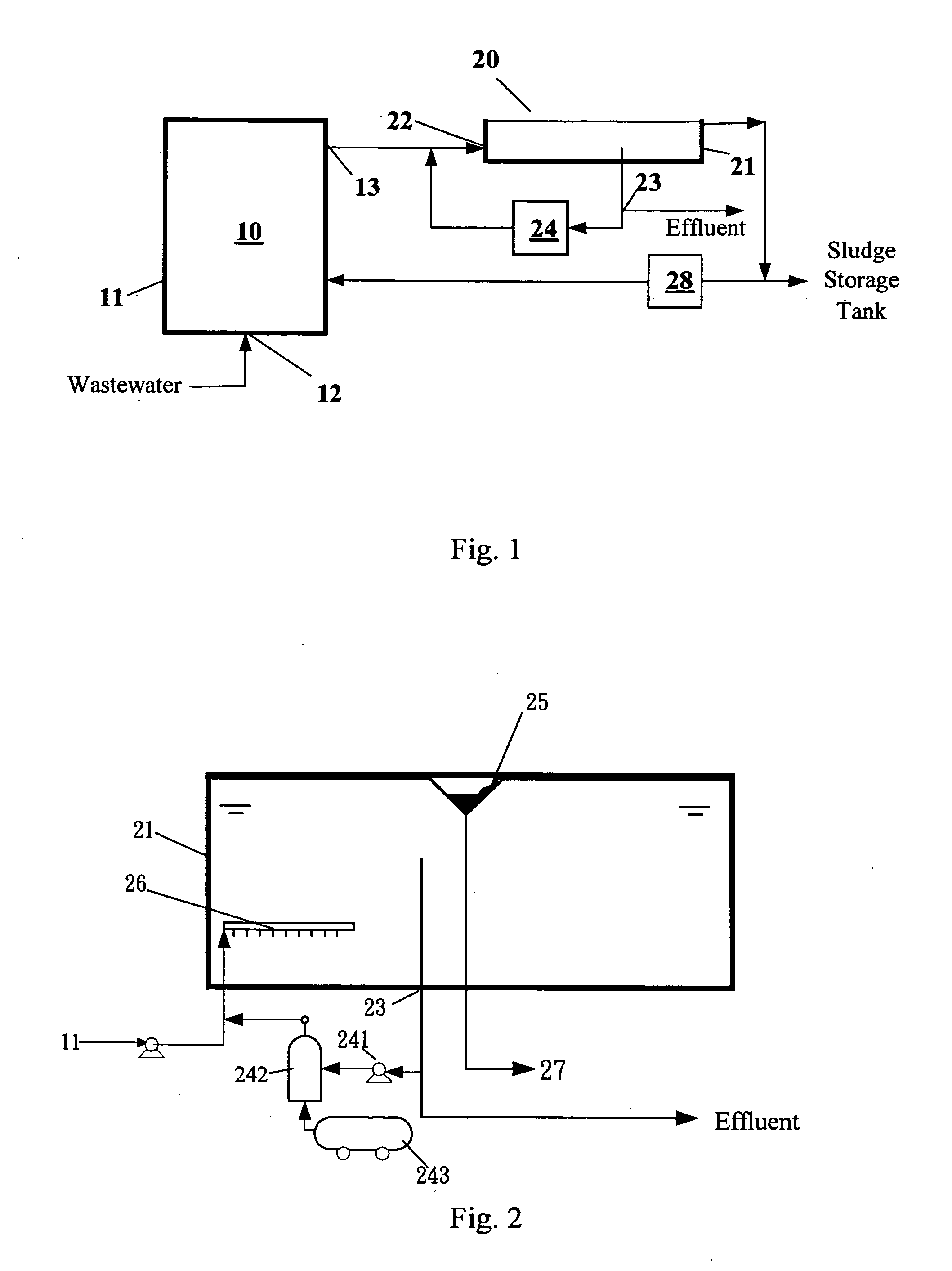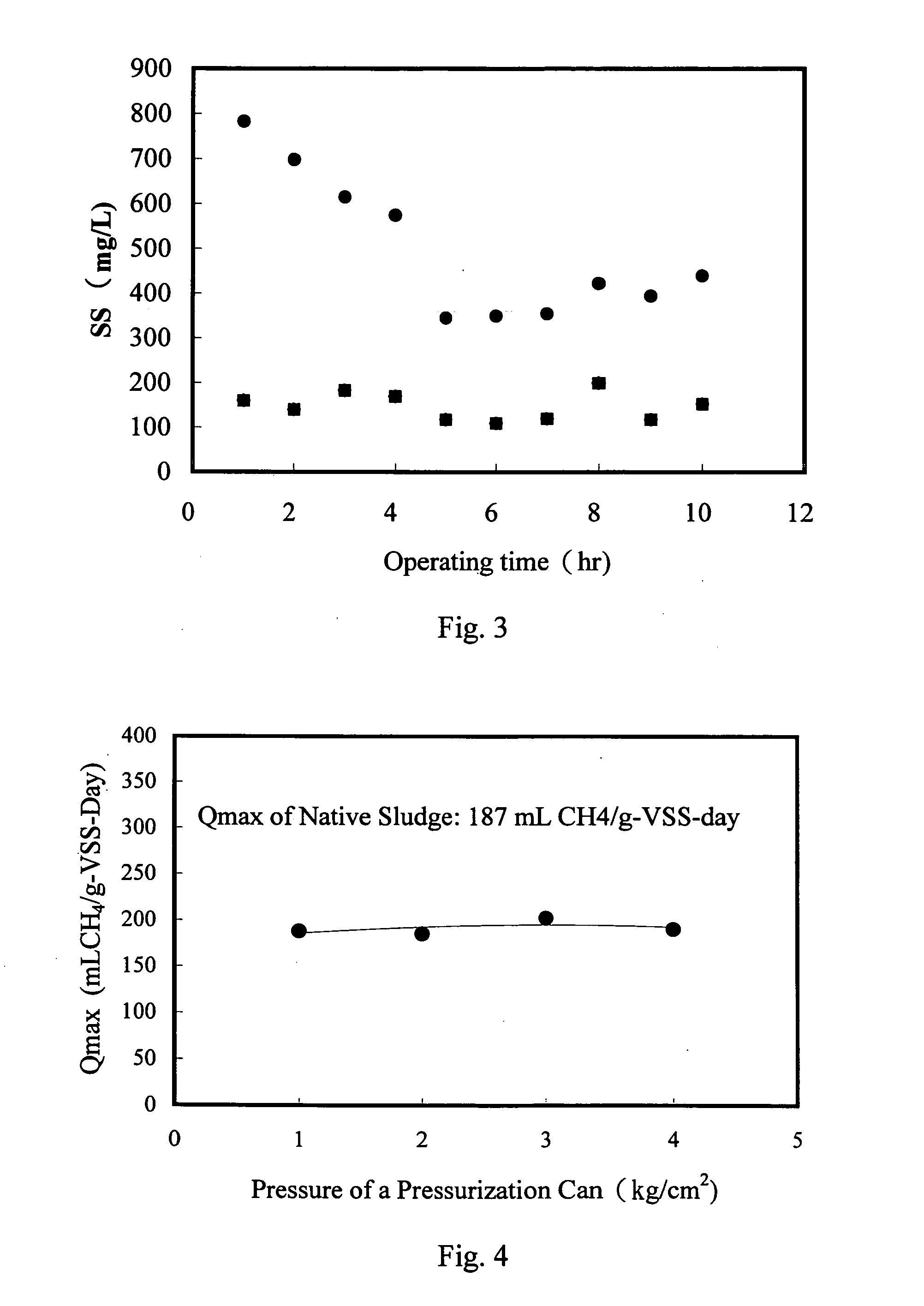Anaerobic biological wastewater treatment system and process
a biological wastewater and treatment system technology, applied in the direction of multi-stage water/sewage treatment, filtration separation, separation process, etc., can solve the problems of low yield of anaerobic microorganisms, limited design of three-phase separators, and extremely high limitations on hydraulic load of such separators, and achieve high volumetric efficiency
- Summary
- Abstract
- Description
- Claims
- Application Information
AI Technical Summary
Benefits of technology
Problems solved by technology
Method used
Image
Examples
example 1
[0044] As shown in FIG. 1, the system of this example included an anaerobic sludge bed tank and a DAF tank. The system was tested in a food processing plant. The anaerobic sludge bed treatment tank used the UASB reaction tank of the food processing plant. The UASB was equipped with a three-phase separator with a hydraulic load of 16 m3 / m2-day. The UASB reaction tank had a volume of 390 m3, and a water treatment capacity of 1000 m3 / day. As shown in FIG. 2, the DAF tank included a tank body with a diameter of 1.2 meters. In this example, 120 L / min of water was pumped from the bottom the three-phase separator of the UASB reaction tank to perform a separation test of the DAF tank. The experimental process did not include a chemical reagent. The hydraulic load of the DAF tank was 150 m3 / m2-day, the pressure of the pressure tank was 4.5 kg / cm2, and the reflux flow was 50 L / min. The experimental results are shown in FIG. 3, wherein the concentration of the suspension solids (SS) of the inf...
example 2
[0046] This experiment was carried out in a batchwise procedure and included mounting an anaerobic sludge in a DAF tank and setting the pressure tank at different pressures (more oxygen being released at a higher pressures) to perform a flotation process for a specified period of time (10 minutes). The floatation concentrated sludge collected from the liquid surface of the DAF tank was measured by the same anaerobic microorganism activity measurement procedure in order to obtain a maximum methane production activity (Qmax) for the anaerobic microorganisms, and the obtained value was compared to the activity of the original sludge (un-floated).
[0047] A procedure for measuring the maximum methane production activity (Qmax) is described below. Microorganisms were loaded in an Erlenmeyer flask, and a quantitative amount of sodium acetate was added into the flask as an organic material. Next, nitrogen was introduced into the flask to flush out air therein, and subsequently the flask was...
PUM
| Property | Measurement | Unit |
|---|---|---|
| Pressure | aaaaa | aaaaa |
Abstract
Description
Claims
Application Information
 Login to View More
Login to View More - R&D
- Intellectual Property
- Life Sciences
- Materials
- Tech Scout
- Unparalleled Data Quality
- Higher Quality Content
- 60% Fewer Hallucinations
Browse by: Latest US Patents, China's latest patents, Technical Efficacy Thesaurus, Application Domain, Technology Topic, Popular Technical Reports.
© 2025 PatSnap. All rights reserved.Legal|Privacy policy|Modern Slavery Act Transparency Statement|Sitemap|About US| Contact US: help@patsnap.com



